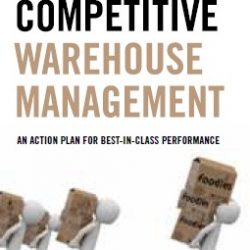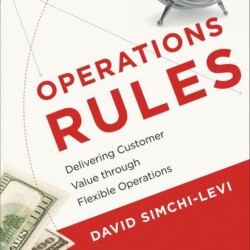Majority of Distribution Centers are Weak Link

As many as 55 percent of distribution centers make so little use of modern management methods and IT support that they qualify as weak links in the supply chain. Managers in these distribution centers are often busy fire-fighting and have little time to address bottlenecks. This follows from a four-year study of author Jeroen van den Berg among 500 distribution centers in The Netherlands for his new book Highly Competitive Warehouse Management.
The author says: “I identified the working methods and technologies from best-in-class distribution centers in various fields such as IT, process design, organization, performance measurement and supply chain collaboration. Examples are performance management on the shopfloor, paperless WMS or clear arrangements with supply chain partners. It appears that distribution centers only use one third of these best practices on average. Because of this, they are not able to provide competitive services and costs are unnecessarily high. This is a shame, not only because of the average 20 percent waste of costs, but also because the logistics performance harms the competitiveness of the company. ”
In the study, distribution centers are divided into three groups according to the degree of maturity: leaders, followers and laggards. Only 7 percent of distribution centers belong to the leader group. These DC’s deliver excellent performance and create competitive advantage for the company.
In particular, companies in high-tech and retail are outperforming others. Van den Berg may well explain this: “The high-tech market has relatively low margins and short product life cycles. Thus these companies need smart logistics to get the limited stocks to the right place on time. Retail combines relatively low margins with complex fine meshed deliveries. Moreover, any mistakes in deliveries directly results in empty shelves in the store. This puts a lot of pressure on the logistics function.”
No less than 55 percent of distribution centers are in the laggard group. In these DC’s, it is often quite a challenge to get the goods out every day. Many managers perceived their scores in the study as a wake-up call: “We had no idea that we were behind.” The researcher gives them a tip: “Start with operating procedures and performance measurement. Then problems will no longer just happen, but you see them coming and you can take immediate action. ”
The results can be read in the report Warehouse Maturity: Key to Best-in-Class Performance, which can be downloaded via www.hcwm.net.
About Jeroen van den Berg
Jeroen van den Berg (1967) is an expert in warehouse management. In his work as a consultant, author, trainer, lecturer or researcher, he challenges people to see the big picture and to overcome the obstacles that prevent progress in companies.
He is author of ‘Highly Competitive Warehouse Management’ (2012). In 1996 he graduated from the University of Twente with his thesis entitled ‘Planning and Control of Warehousing Systems. He graduated in Applied Mathematics at the same university.
About the book Highly Competitive Warehouse Management
Title: Highly Competitive Warehouse Management
Subtitle: An Action Plan for Best-in-Class Performance
Edition: International Edition
Edition: Second revised edition
Language: English
Release date: 01/19/2012
Publisher: Management Outlook, Buren (www.hcwm.net)
ISBN: 978-1-4662-6860-9










